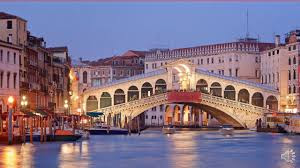Creating Climate Hope
While climate change is in reality a very serious and impactful challenge to mankind there exists plenty of hope in combating it. Climate change will manifest as the physical consequences of a warming climate: floods, droughts, heat waves and the like. There are also the socioeconomic effects originating from these impacts. But given all this, there still is a lot of hope in climate action and therefore a window for change. There is also momentum for change, something evidenced by the fact that climate change is one of the topics being discussed globally with those for action more than those against.
 |
| A rose on concrete - there is hope in climate action |
Let us start with legislation. A lot of countries in the
world have introduced climate legislation in their laws. The Kenya Climate
Change Bill was passed into law in 2016. The bill establishes a national
climate change council, the climate change directorate, includes the environment
and land court and directions for a national climate change action plan. It
goes a long way in laying a legal foundation and framework to initiate and
undergird climate action and environmental protection. This is important because
Kenya being an African country faces significant climate change effects and is
also a hotspot for climate innovation.
The law also gives a basis to spur climate responsible
development and innovation. It encourages sustainability in all facets and
sectors of society. It also gives legal recourse to anyone who would like to
litigate in a court of law concerning their rights and those of the environment
being infringed upon.
In New Zealand, a climate law for the financial sector has
been introduced. It compels companies with assets worth 1 billion New Zealand
dollars to report on the effects of climate change on their business and the
risks. This is a laudable move because the financial sector is largely
responsible for supporting fossil fuel mining and development. Fossil fuels
i.e. coal, oil and natural gas are the chief cause of greenhouse gas emissions
that cause the current anthropogenic climate change.
The youth movement is another source of climate hope. Young
people all over the world as well as their descendants will face climate change
head on, yet not enough is being done to involve them in what will clearly and
considerably impact them. There is also not sufficient momentum to shield their
future from climate change. But on a positive note, they have taken matters in
their hands, rallying in massive protests and agitating for action against the
climate crisis.
Of note is the African continent, of which 60% of the 1.2
billion people are under 25 years of age. These young people, a good number of
them educated to the tertiary level, possess the skills and innovativeness, the
drive and energy to spur sustainable development in the continent, especially
in the agriculture, manufacturing and renewable energy sectors. The
possibilities for this are enormous, given the ready access of renewables in
the continent and the huge pool of talented and skilled labor to drive it.
Another reason for hope is the massive growth of renewables.
The International Energy Agency noted a 45% jump in renewables in 2020. Renewable
energy, which is clean and not as harmful to the planet, is also easily
replenished. This is especially so in Kenya and India, who are global leaders
in electricity generation from renewable sources such as solar and wind
energy. Kenya produces 70 % of its power
from renewables particularly geothermal power. It is ninth globally in
geothermal. The biggest renewable energy generators in the world are China,
followed by America and India. India is especially notable because its
renewable energy sector is growing by leaps and bounds. The country aims for 40% renewables share in
its national electricity supply by 2030. This would be quite an achievement
given that it is the second most populous country in the globe, only behind
China and the third biggest emitter as well.
In Kenya, the Lake Turkana wind power plant, the largest of
its kind in Africa, injects 310 megawatts of power into the national grid. To
add to this, the Ngong wind power plant also contributes to the grid. The
Garissa solar plant supplies 2% of electricity in the country. There is huge
potential for solar and wind power especially in African countries as the
continent receives massive hours of sunshine all year round.
Off grid power especially rooftop and community solar has
taken off in Africa as business meets sustainability. Several companies, fully
taking advantage of this, have come up with a business model of selling cheap
solar photovoltaic to areas not connected to the national grid, especially
because a large population of Kenyans live in rural areas. This in turn
supports the rapid growth of businesses and lights up communities.
Elsewhere, the Re100 is an initiative led by the Climate
Group. It consists of over 300 diverse corporate members committed to a hundred
percent use of renewable energy in their operations.
Increasingly, corporates are now taking their environmental
responsibility seriously. Businesses worldwide are aware of the impact their
work has on climate and continue to commit themselves to green and sustainable
development. IKEA for example is buying back second hand furniture instead of
it being thrown away. This reduces emissions from forest harvesting, waste and
energy use.
Businesses are waking up to the fact that consumers are more
environmentally conscious. It also makes financial sense to go green as witnessed
by the stratospheric rise of green bonds.
More than one hundred international corporations have also
signed the Climate Pledge, vowing to become net zero emitters by 2040. This
means that in all their activities and processes, they will strive to release
as little emissions as possible, and most importantly, the amounts of emissions
released will equal what is absorbed.
The United States
administration recently signed an executive order requiring half of all cars
sold to be zero emission by 2030. This is great news for electric vehicles,
which are the future. Given that the U.S is a world leader and the second
largest emitter, it sets a good pace and positive tone for the world. Japan is
a global leader of electric vehicle sales, and has pledged to sell only
“environmentally friendly” cars by 2035. Tesla, the lead manufacturer of EVs,
General Motors and Volvo have all considerably veered into the electric vehicle
lane.
The Paris Agreement has near universal membership and the
biggest emitters have already ratified it. Almost all the world, has agreed to
the pact which is significant, given the status of its predecessor, the Kyoto
Protocol. The Agreement aims to cap global atmospheric temperature rise this
century to 2 degrees above preindustrial times and better still limit it to 1.5
degrees. Of note is that we are at 1.1 degrees rise and much is being done to
keep warming from rising.
The Nationally Determined Contributions which are updated
and ratcheted up every 5 years also are a source of hope, albeit more needs to
be done.
There is also good news in terms of gender equality. The
inclusion of women and girls is making climate action more impactful.
Political action is by far one of the most important
constituents of climate action. Politicians and legislators make and influence
laws and policy, and so decide on the direction that a country will take
climate wise. Political leaders determine a country’s direction. It is
encouraging to note that more of the world’s population is coming alive to the
fact that climate change is real and will not just go away if ignored.
Climate influenced events such as the wildfires in Australia
and America, the devastating floods in Germany and parts of Europe as well as
the locust invasion in parts of East Africa are all far reaching wake up calls
to ordinary people whose lives and businesses are affected. Efforts at climate education are now bearing fruit, showcased by a more environmentally aware electorate,
who now elect leaders who have the wellbeing of the climate and therefore the
people as part of their development agenda. A good example would be New
Zealand’s Prime Minister, Jacinda Ardern.
Efforts are also underway to make agriculture more
sustainable without negatively impacting food production, because the sector
makes up for a third of emissions. Hydroponics, agroforestry, conservation
agriculture to name but a few, are examples of this.
Another crucial component of climate hope is adaptation.
Adaptation means changing our way of life and of doing things in order to come
to terms with the changing climate, especially because the effects of climate
change will continue into the future. Adaptation offers hope that if combined
with mitigation, climate action will bear fruit.
A big part of adaptation is innovation. Human beings since
the beginning of age have always possessed the capacity to adapt and make best
of the situation presented to them. Far reaching and effective changes need to
be implemented in business and economic sectors as well as society in general.
New infrastructure needs to be built in a climate friendly way and already existing
infrastructure tweaked and modified in order to be resilient to climatic
shocks.
We need to cut emissions quickly, and many have taken up
this call. The race to zero is speeding up, and many state and non-state actors
have made the commitment to cut emissions significantly. The aim is that by
2050, the half century mark, the total amount of emissions released into the
atmosphere will equal the amount absorbed and put away in carbon sinks.
Communication is also essential in creating hope in the
climate fight. While it is true that climate is changing and most of its
effects are negative, there is also considerable momentum in action, and
significant results. It is important to word the climate fight in language that
is true and clear, precise and trust worthy. It is also necessary to communicate
things in a way that shows the devastation caused by inaction but also the
capacity of affected parties to act and opportunities that exist in climate
action. A lot of people and entities in their own way have and still are doing
what they can to both adapt and mitigate.
“Haba na haba hujaza kibaba” – A Kiswahili saying meaning that
little by little fills the cup.
It is important to note that that though the speed at which things
are being done is not satisfactory, yet there is something that is being done,
which is better than none at all.
By all means life will continue, but in what condition?
Under what circumstances? If we can, and we do have the power to act, let us
choose a better and healthier planet for ourselves and future generations.
It is not all gloom and doom, there is plenty of hope in
climate action.




Comments
Post a Comment